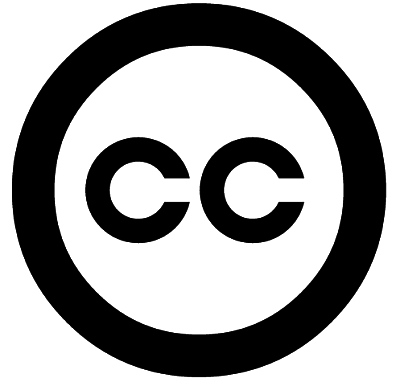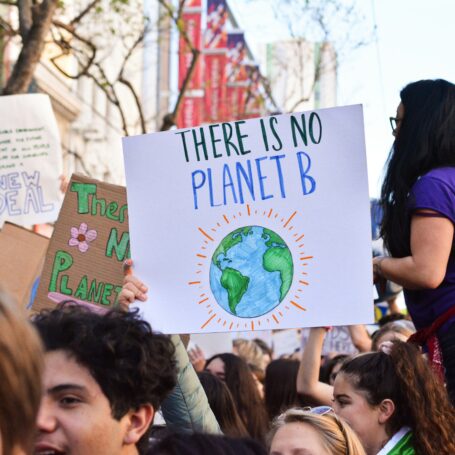Do Scholarly Publishers Need a Creative Un-Commons?
 Last Thursday, almost 60 organizations, ranging from library umbrella organizations to advocacy groups to open-access publishers, issued an open letter at the Public Library of Science website calling on the International Association of Scientific, Technical and Medical Publishers to rethink model licenses the organization had suggested for open access. This coalition, which now numbers 73 members, suggested the STM model licenses trod on the existing Creative Commons licensing framework, which the letter called “the de facto global standard for providing users with legal confidence of their rights to reuse content.”
Last Thursday, almost 60 organizations, ranging from library umbrella organizations to advocacy groups to open-access publishers, issued an open letter at the Public Library of Science website calling on the International Association of Scientific, Technical and Medical Publishers to rethink model licenses the organization had suggested for open access. This coalition, which now numbers 73 members, suggested the STM model licenses trod on the existing Creative Commons licensing framework, which the letter called “the de facto global standard for providing users with legal confidence of their rights to reuse content.”
As Paul Jump noted at Times Higher Education, concerns about the Creative Commons language allowing commercial reuse combined with Research Councils UK mandates for the CC-BY license (reuse with proper attribution) created pressure for STM to act. According to the Creative Commons website, a CC-BY license “lets others distribute, remix, tweak, and build upon your work, even commercially, as long as they credit you for the original creation. This is the most accommodating of licenses offered. Recommended for maximum dissemination and use of licensed materials.”
But over at the Wellcome Trust blog, Chris Bird, the senior legal counsel, and Robert Kiley, the Wellcome Library’s head of digital services, see these issues not as flaws but as features:
The great thing about CC-BY is freedom to re-use, and interoperability with other platforms and technologies. Anyone can re-use CC-BY content without getting permission: all they need to do is give credit to the author.
Under CC-BY, anyone can take an article and translate it to a different language, use text and graphics such as figures and tables in their own presentations or blogs, and use the power of computers to create links and generate new knowledge.
Anyone can post CC-BY content to any web site, including commercial ones, allowing much wider reach. For example, if new research was published which described new approaches to reduce cot death, this could be re-published without permission on Mumsnet and BabyCentre (both highly commercial sites) in order to reach more parents who may not generally search journal web sites or repositories like Europe PMC.
But adding a different sort of license to the mix, as STM had suggested, didn’t make things “easy to use,” the coalition insisted in its letter, but did make the various open-access systems increasingly incompatible and confusing:
In their current formulation, these [STM] licenses would limit the use, reuse and exploitation of research. They would make it difficult, confusing or impossible to combine these research outputs with other public resources and sources of knowledge to the benefit of both science and society. There are many issues with these licenses, but the most important is that they are not compatible with any of the globally used Creative Commons licenses. For this reason, we call on the STM Association to withdraw them and commit to working within the Creative Commons framework.
The STM association responded quickly with its own letter, saying that the needs of academic and scholarly publishing essentially required is own custom set of rules, rules that wouldn’t always replace Creative Commons but that could complement it:
Many of the Association’s Members already use CC BY or other Creative Commons licenses for their Gold OA offerings, and likely will continue to do so. The broad background to STM’s efforts in creating standard model user license clauses is that there are a variety of publisher-bespoke user licenses of open access content, in addition to the use of various CC licenses other than CC BY. STM encourages model licenses and user language across the industry that are easy to use and have clear and relevant terms for researchers.
Biophysicist Cameron Neylon, the advocacy director at PLoS, responded that when it comes to open-access conventions, scholarly publishing needs to be in the mainstream, not in its “own little pool.” He defended the credentials of the “amateur” antecedents of much of the open-access movement, saying that rather than shunning their offerings, it was time to embrace the hard-won lessons. (His post was published under a Creative Commons Attribution 4.0 License.)
There is much that they can teach us about managing information at scale and making it accessible and usable. The infrastructure they are building could be an important contribution to our own information platforms. There are tools and systems I have seen demonstrated here, many of them built by those ‘amateurs’, which far outstrip the capabilities we have in the academic information ecosystem. And we don’t come to the table empty handed – we have experience and knowledge of curation and validation at different scales, on how to manage review when appropriate experts are rare, on handling conflicts of interest and the ethical conduct of information gathering.
But we are just one contributor to a rich tapestry of resources, just one piece in a puzzle. One of the things I find most disappointing about the STM Association response to yesterday’s letter is the way it perpetuates the idea that it makes sense to keep scholarly publishing somehow separate from the rest of the web. The idea that “Creative Commons Licenses…are not specifically designed for academic and scholarly publishing” aside from being a misrepresentation (a subject for another post) makes very little sense unless you insist on the idea that scholarly work needs to be kept separate from the rest of the world’s knowledge.
Now don’t get me wrong – scholarly knowledge is special. It is special because of the validation and assessment processes it goes though. But the containers it sits in. They’re not special. The business models that provide those containers aren’t particularly special. But most importantly the ways in which that knowledge could be used by a motivated community aren’t any different from that of other knowledge resources. And if we don’t make it easy to use our content then it will simply be passed over for other more accessible, more easily useable materials.
This community, this massive, engaged and motivated community are our natural allies in knowledge creation, dissemination, research engagement and ultimately justifying public research funding. We disengage from them at our peril. And we don’t get to dictate the terms of that engagement because they are bigger and more important than us. But if we choose to engage then the benefits to both our communities could be enormous.
Bird and Kiley at Wellcome, writing under a Creative Commons Attribution-Non-Commercial 2.0 UK: England & Wales license, added another requirement: “open access publication must also be easy for researchers to understand and use”:
We are very conscious that authors still get asked to choose their licence when they publish open access, and that the choice can be confusing and complex (typically they are offered the Creative Commons attribution (CC-BY), attribution with no commercial re-use (CC-BY-NC), and attribution with no commercial re-use and no right to create derivatives (CC-BY-NC-ND)). We understand that many researchers will have little interest in the nuances of the “NC” licence versus the “BY” licence – it would be easy to think that a charity like the Wellcome Trust would not want its funded research to be used commercially, for example – so we try to work behind the scenes to make the choice that bit easier.
So while we’re happy that the licensing landscape has been getting simpler in recent years, we are concerned that the publication of the STM model open access licences will make the author’s life unnecessarily complex. Put simply, we see no value in these new licences, and believe that if a publisher wishes to restrict how content can be used (excluding Wellcome funded, OA papers which must always be published under the CC-BY licence), the existing Creative Commons licences (e.g. CC-BY-NC and CC-BY-NC-ND) are more than adequate.
Of course, first and foremost we also believe that anything describing itself as “open access” should truly be open, which means CC-BY – tested by users, interoperable, and globally recognised.



























































































